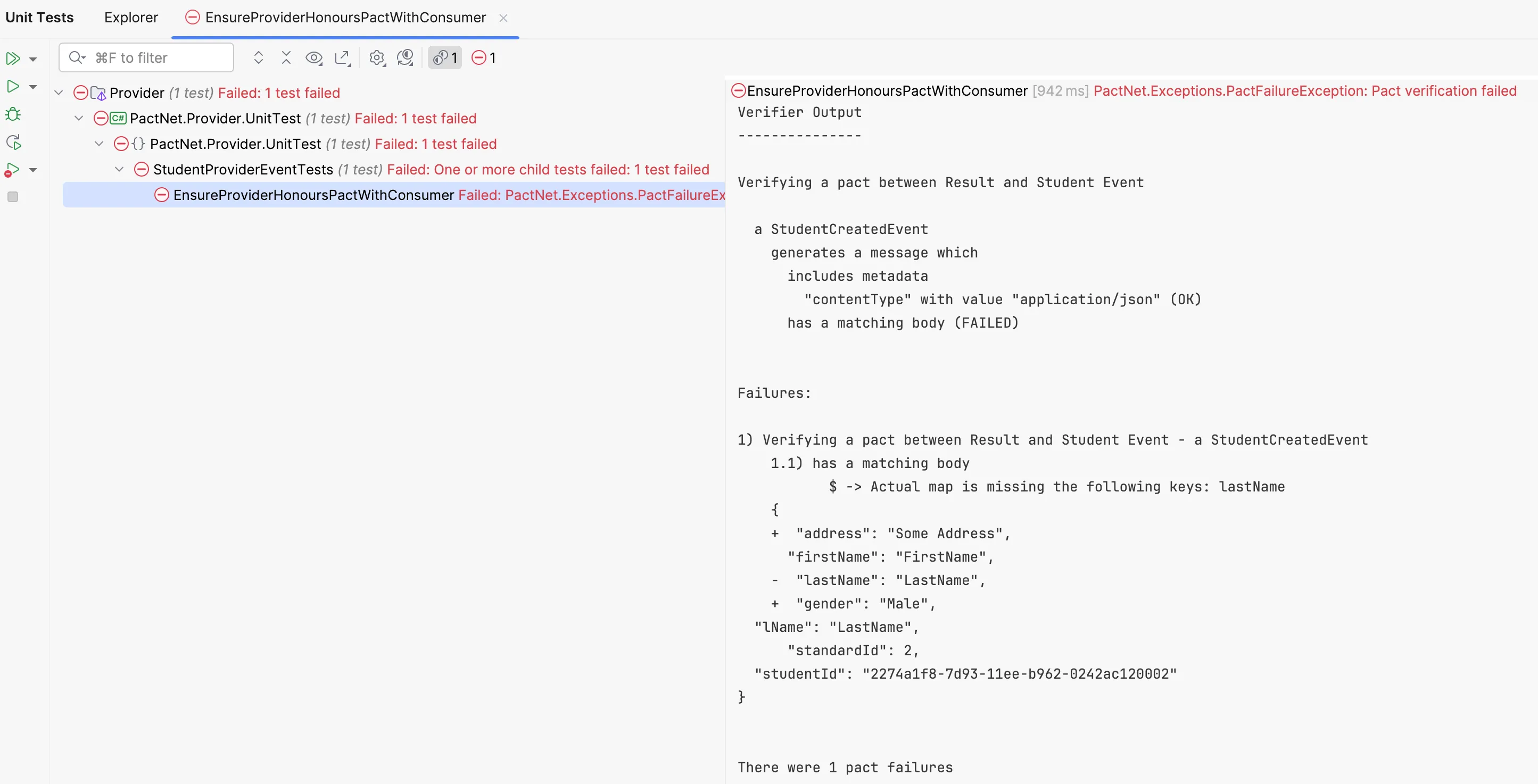Intro to PACT for .NET Core: Events based systems

Introduction
This is a continuation of the PACT for .NET series where I am going to cover the usage of PACT in event-based systems.
This article assumes the readers will have a basic understanding of event-based systems and frameworks. In case not, a good place to start can be RabbitMQ Tutorials.
I will be using the same repo setup that I have used to demonstrate usage in API-based systems. I have covered the setup in detail in a previous blog in this series:
Contract testing for APIs: Intro to PACT for .NET Core
Intro to PACT for .NET Core: API contract testing
devcodex.in
Scenario: Event Flow
For illustration purposes, we can imagine a scenario where the Result service (Consumer) wants to get informed whenever a student is created.

Now since both Result and Student are separate services, below is the infrastructure that has been implemented in order to make that work.
I have incorporated the RabbitMQ library as a messaging service in both the APIs.
Publishing Events
Whenever a new student is created using the Student service’s (Provider) POST API, we are publishing an event called StudentCreatedEvent.
Code Sample - Publish event during student creation
The event structure includes details such as:
Code Sample - Properties inside StudentCreatedEvent
Listening to Events
Now the above event can be listened to by any service interested in that event. In this scenario, that service is the Result service.
There is a listener defined in the Result service which may perform any operation based on the information received in the StudentCreatedEvent.
Code Sample - Student created event listener in Result service
For example, it may store student details in the Result service to avoid direct dependency on the Student service while preparing results.
Contract Testing with PACT
The first part of contract testing involves defining the expected event structure on the consumer side, which results in generating a PACT JSON contract file.
Code Sample - Consumer test defining the contract
Once the contract is defined, a PACT JSON contract file is generated, which looks something like this:
Code Sample - Contract snapshot
Verifying the Provider
Now that this contract file has been created, we need to write tests on the provider side to ensure that it adheres to the contract.
Code Sample - Provider side contract verification
PACT Testing in Action
Now that this setup is ready, we can quickly do a build and test:
dotnet build dotnet build Alternatively, you can run individual tests as well.

Failure Case Example
To test a failure case, we can make some changes in our provider. For example, renaming the LastName field to LName and rerunning the tests.
Code Sample - LastName property renamed to LName
When we run the tests, we can see the results:

As we see in the results above, the error message suggests that the LastName field is missing on the provider side.
Conclusion
By implementing contract testing with PACT for event-based systems, we ensure reliable integrations between services.
This methodology helps detect issues early, ensuring both consumer and provider remain in sync.
For reference, the code repository being discussed is available at github: https://github.com/ajaysskumar/pact-net-example
Thanks for reading through. Please share feedback, if any, in comments or on my email ajay.a338@gmail.com

